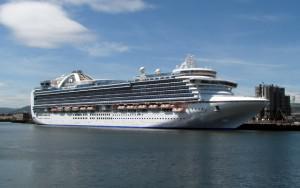 I had the wonderful opportunity of spending some time with family last month. We enjoyed a relaxing cruise through the eastern Caribbean. It was the second cruise I had ever been on and the first time as an adult (college doesn’t count).
I had the wonderful opportunity of spending some time with family last month. We enjoyed a relaxing cruise through the eastern Caribbean. It was the second cruise I had ever been on and the first time as an adult (college doesn’t count).
In thinking about sustainability and consumption, I was struck by a few specific points. For one, the amount of waste was unreal. This is true of most any buffet intensive eating situation. Leftover food and wasted portions run amok. I asked a few of the staff about the wasted food and was told it had to be thrown out within four hours per American food safety standards. The upside though is that it was ground up and disposed of at sea to become food for the marine ecosystem. Aside from the issues of waste and ground up seafood being fed potentially to sea life, at least it wasn’t ending up in a landfill.
Regardless, the consumption in terms of food was staggering. I understand the need to be “over prepared” and that certain foods could decay or rot if not kept at proper temperatures, in addition to the possibility of disease. However, it is staggering the amount of food that was put out at the breakfast and lunch buffet. Yes, the cruise line does not want to run out, but this was mind boggling. Furthermore, one of the staff told me that they had a separate buffet. I wouldn’t ask them to eat the leftovers, but it represents another “hidden” waste stream.
While there was some recycling, another crew member told me that all the trash was sorted. I expressed a modicum of surprise, especially given that people on the cruise (mostly Americans and some Canadians) did not seem overly concerned with putting items in the proper receptacle. A third crew member mentioned in passing that the ship spent roughly $1,000,000 on diesel fuel for the seven day journey. Doing a bit of mental math that works out to between 200,000 and 250,000 gallons of fuel, given prices between $4 and $5. With 1,250 staterooms for passengers, plus accommodations for 2,000 crew, that adds up to a lot of air conditioning, lighting, and water heating. Lastly, I asked about the water supply and was told it is all desalination. This is an energy intensive process, which may also account for the massive fuel consumption.
Another unfortunate aspect was watching the smoke stacks belch a dizzying amount of exhaust. Given the number of ships traveling the open waters, it is staggering to consider this aspect of leisure cruises.
[Image source]

